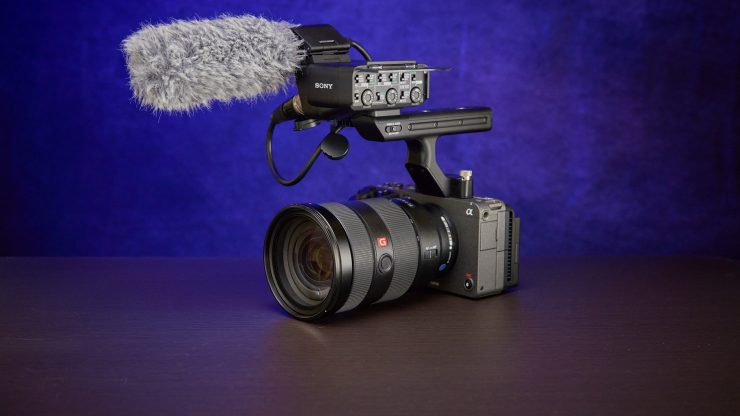
Sony is celebrating the 10th anniversary of releasing its first full-rame alpha mirrorless hybrid cameras. On October 16th, 2013, Sony announced its first-generation alpha 7 and alpha 7R cameras. Sony took the mirrorless hybrid dive long before its competition and the original a7S arguably became the natural successor to the Canon 5D mark II for those shooters who wanted a lightweight and compact video solution.
I am not going to go through all of the Sony alpha cameras, because that would take an eternity! I will, however, just mention a few of the models that have come out over the last 10 years.
a7 & a7R
At the time, the Sony alpha 7 and Sony alpha 7R were the world’s smallest, lightest full-frame mirrorless interchangeable lens cameras. The Alpha 7 featured a 24.3 megapixel full-frame Exmor CMOS sensor with a BIONZ X processor. It was also coupled with a fast hybrid AF system.
The alpha 7R featured a 36.4 megapixel Exmor CMOS sensor, and at the time, it had the highest resolution sensor in Sony’s line. The camera didn’t have an optical low pass filter.
a7S

Here is where things got interesting for video shooters. Roughly 6 months after the introduction of the a7 and a7R, Sony announced the groundbreaking a7S at NAB 2014. The a7S was primarily aimed at video shooters and it was able to be used at very high ISOs with very little noise. It went on the gain a reputation for being the king of low-light performance.
Internally the camera could record up to 1080P HD in XAVC-S 4:2:0 at 50Mb/s. Externally it can output 4K (QFHD: 3840 x 2160) 4:2:2 to an Atomos external recorder. For news shooters, it could also record interlaced HD frame rates internally using AVCHD – albeit at lower nitrates than XAVC-S.
In-camera color profiles included Sony’s S-log2. The camera had a 12.2 megapixel full-frame CMOS sensor which due to the lack of pixel binning provided a moire and aliasing free image.
I was able to get hold of a very early version of the a7S that I reviewed.
a7II
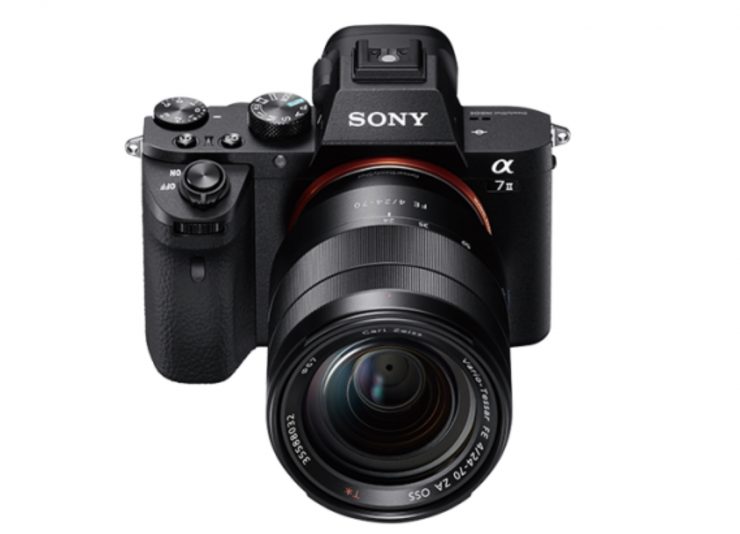
Later in 2014, the a7 II arrived. It was an upgrade to the original a7. The camera featured a Hybrid AF system that was 30% faster and it had better AF tracking compared to its predecessor.
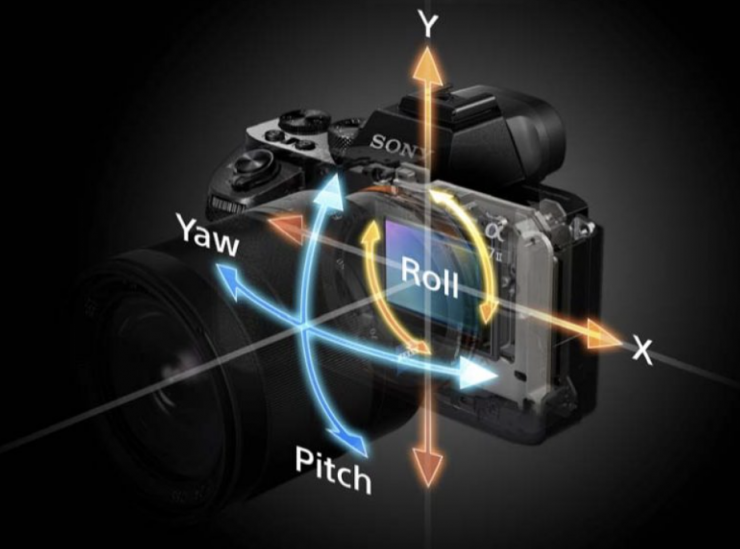
Perhaps the biggest advancement was that it was the first mirrorless camera to offer in-body image stabilization. The a7 II’s brand new 5-axis sensor shift image stabilization system was similar to the system in the Olympus EM5 micro four-thirds camera.
The other video features of this camera that improved from the original a7 were the addition of S-log 2 and Cine gammas.
I think what was most interesting is that we saw a camera company releasing a new model just a year after the initial model was announced. This was something we hadn’t seen before as most camera companies had cycles of about 3-4 years between models.
a7R II & a7S II
Sony continued to release more and more full frame alpha cameras in 2015 with the announcement of the a7R II and a7S II. The headline spec for the a7R II was that it was the world’s first mirrorless camera with a back-illuminated full frame sensor and a resolution of 42.4 megapixels. This sensor technology provided better low light capabilities and improved autofocus. and the second-gen camera also had the ability to shoot and record 4K video in multiple formats.
The a7R II offered internal 4K recording at 100 Mb/s and both S35 and full-frame crop options. Video image quality was claimed by Sony to be excellent, and the same range of image controls that were found on the a7S were also found on the a7R II. Importantly the base ISO for S-Log2 shooting was 800, which was much more usable than the 3200 ISO on the a7S. The in-built 5-axis lens stabilization with the right Sony lenses made it a popular camera with news and event shooters.
At IBC 2015 in Amsterdam, Sony unveiled the a7S II. The a7S II featured the same 12.2 megapixel 35mm full-frame image sensor as its predecessor. The headline specs were an ISO range that extends to an eye-watering 409,600 rating, in-body image stabilization, and in-camera 4K recording.
All the same picture profiles that were on the a7S could be found on the a7S II, but there were two new additions. Along with S-Log 2 there was also the option to choose either S-Log 3 or S-Log3 Cine for what Sony claims is a more filmic look. The base ISO when using S-Log3 or S-Log3 Cine gammas has been lowered to 1600 ISO instead of the 3200 for S-Log2 on the a7S.
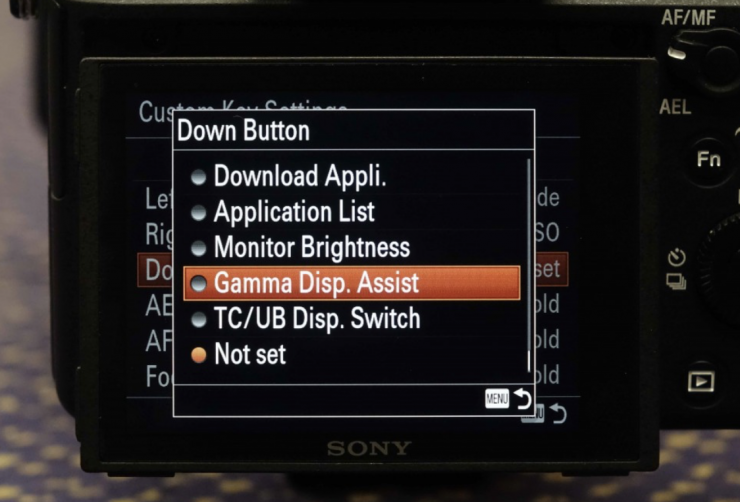
Another new feature that the a7S II gained was the ability to use a Gamma Display Assist which allowed you to use a sort of LUT to help display S-Log3, S-Log 3 or S-Log3 Cine to help with focussing and give you an idea of how your footage may look once it has been graded. There were three different Gamma Display Assist options to choose from: Auto, S-Log2 709 (800%) and S-Log3 709 (800%). The Gamma Display Assist function can be added to any user button for easy access.
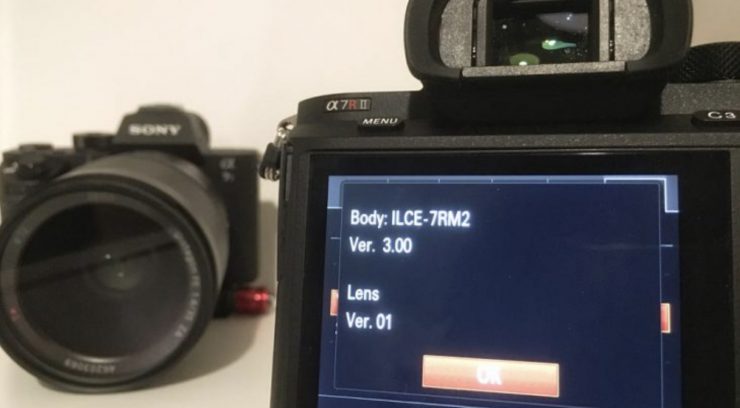
Later in the year, Sony announced new firmware for the a7R II and a7S II to address overheating issues. While Sony’s a7R II and a7S II were great cameras, they have had one major weakness – they overheated when used for extended periods. From our testing of both cameras at the time, they stopped recording before the theoretical 29-minute 59-second limit on PAL versions of the camera. The worst case scenario was that if you shot internally-recorded 4K handheld run-and-gun in warm conditions and used the image stabilization. Longer times could achieved by shooting on a tripod without image stabilization, but the cameras still have a tendency to just give up and often need to be left to cool off for a while before recording can resume.
I think people forgot just how long we have been dealing with overheating issues in mirrorless hybrids. While people made a big deal about the Canon R5, overheating has been a challenge for camera manufacturers for a long, long time.
a9
In April 2017, Sont unveiled its flagship mirrorless hybrid, the a9. The a9 featured a full-frame stacked CMOS sensor with 24.2 MP.
The stacked 24.2 MP2 Exmor RS image sensor featured a new BIONZ X processor and front-end LSI. The processing power from these new components allowed for faster AF/AE calculation while also reducing EVF display latency. The processor and front end LSI were also responsible for the larger continuous shooting buffer, enabling photographers to shoot at a 20 fps with continuous AF/AE tracking for up to 362 JPEG or 241 RAW images. The AF system could track complex, erratic motion with higher accuracy and it had the ability to calculate AF/AE at up to 60 times per second, regardless of shutter release and frame capture.
The new Sony a9 offered 4K (3840x2160p) video recording across the full width of the full frame image sensor. The camera used full pixel readout without pixel binning.
The camera recorded in XAVC S codec in 8-bit at 100Mbps, so again, there was no 10-bit in that release. At release, the camera didn’t feature any of the S-Log 2 or S-Log 3 picture profiles found in other alpha series cameras.
a7 III
In 2018 Sony announced the a7 III. It shared a lot of the same features and functionality as the a9 and a7R III. The a7 III used the 24.2 MP back-illuminated sensor with a Bionz X processor and it focused 2x faster than its predecessor.
The a7 III super sampled a 6K image to deliver video up to 4K in XAVC S with a maximum bitrate of 100 Mbps. Again, internally it was still limited to 8-bit.
The camera had hybrid-log gamma for instant HDR workflow and a claimed 14 stops of dynamic range using S-Log2/3.
a7R IV
In 2019 Sony announced the a7R IV which was the World’s first 35mm full-frame camera with a 61MP sensor. The camera had 15 stops of claimed dynamic range (stills) and 14 stops (movie recording), as well as 5-axis optical in-body image stabilization.
The a7R IV could record 4K UHD in SLog2, SLog3, and HDR. UHD video recording uses the full width of the image sensor, and full pixel readout without pixel binning in Super 35mm mode.
Just like other alpha series cameras, you got the same old 8-bit 4:2:0 internal recording and CbCr 4:2:2 8 bit/RGB 8-bit output over HDMI. The camera continued Sony’s tradition of no UHD 60P (UHD is limited to 30p). Furthermore, UHD at 23.98/25/30P is still at 100Mb/s in XAVC S.
a9 II
In 2020, Sony unveiled the a9 II. The a9 II used the same 35mm full-frame stacked 24.2 MP Exmor RS CMOS image sensor with integral memory as the original Alpha 9, giving it the same speed performance and image quality.
The a9 II brought performance updates for still shooters, but it wasn’t arguably the update that a lot of video shooters were looking for.
a7S III
Also in 2020, we got the a7S III. Fans of the a7S series have had to wait almost 5 long years for the latest iteration to be released.
There really wasn’t a lot to complain about with this release. People wanted 4K up to 60p in 4:2:2 10-bit with no crop and no recording limits when recording in frame rates up to 30p. They also wanted a better menu system, IBIS, and good auto performance. That’s exactly what Sony gave users with this camera.
Sony also added a fully articulating LCD screen. A first for the a7S series.
a1
In 2021, Sony announced their new flagship mirrorless camera the a1. The a1 was a 50.1-megapixel camera that could shoot up to 30-frames per second. If you were capturing video the a1 could shoot 8K 30p 10-bit 4:2:0 XAVC HS recording with 8.6K oversampling. The a1 was also capable of 4K 120p / 60p 10-bit 4:2:2 recording and included S-Cinetone color. You could also record 4K internally at up to 120 frames per second.
In the Super 35 mode, QFHD 4K was acquired through a full-frame readout with no pixel binning from a 5.8K portion of the sensor. As Sony does not mention it, it is probably fairly safe to assume that the 4K/UHD full frame was not being downsampled from a full-frame readout.
FX3
Also in 2021, we got the FX3. Essentially the FX3 was an a7S III in a slightly more video-centric configuration. Even though the FX3 falls under the ‘Cinema Line‘ it had a lot more in common with the a7S III than it did with the FX6.
The only monitoring for the camera came in the form of a 3″ 1,440,000 Dot articulating touchscreen LCD. You didn’t get an EVF like you did on the a7S III.
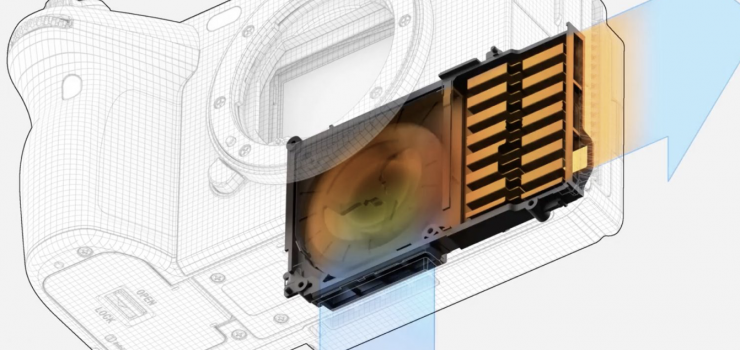
The FX3 featured a built-in cooling fan that Sony has somehow managed to squeeze into the tiny body of the camera. The air intake is on the bottom of the camera and the exhaust is on the left-hand side beneath the HDMI port.
While Sony didn’t state that the camera will not overheat, they did say that you can record UHD 60p 4:2:2 10-bit in 25°c (77°F) ambient temperatures continuously without any overheating issues. Now, depending on what mode you are shooting in and the ambient temperature you could still potentially run into overheating problems when recording for long periods of time.
Now, despite some of the limitations of the camera and the fact that it was essentially just an a7S III in a different body, it has been a very successful camera for Sony.
a7R V
In 2022 we got the a7R V. The camera featured a 61MP sensor with a new AI processing unit chip. The new AI processing unit was claimed to enhance autofocus and provide a more accurate white balance.
The camera got an updated IS system that supported up to 8 stops of camera shake compensation. The 5-axis stabilization system combined a high-performance gyro sensor with an optimized algorithm for more precise shake control and improved communication between the camera body and lens.
The a7R V could record 8K video and 4K capture oversampled at 6.2K without pixel binning. The camera also included S-Log 2 & 3 and S-CINETONE.
Sony also introduced a new feature for a stills camera called Breathing Compensation. This reduced the issue when rack focusing to make background shifts less distracting.
What will the next 10 years bring?
That is a good question! With the speed of technology moving so quickly it will be interesting to see what features and advancements get brought to the alpha series moving forward.
What would you like to see added in future models and what was your favorite Sony alpha camera? let us know in the comments section below.





